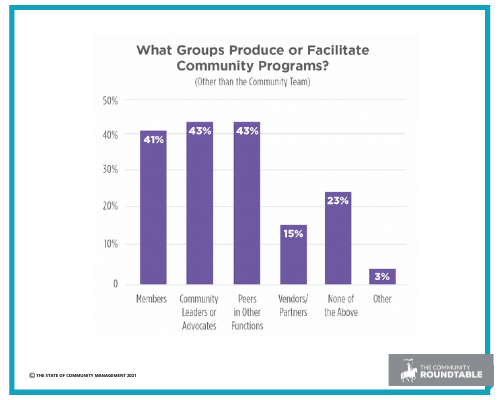Content and programs are the lifeblood of a successful online community program. They are often seen as one collective entity, but they serve two different roles for communities. Content gives people a reason to visit (and return to) an online community, while programs create opportunities for members to connect with one another.
In previous editions of our State of Community Management research, we’ve noted that aligning your content and programs with your online community strategy is critical to becoming a best-in-class online community. Content and programs need to reflect the shared value of community, and a program plan tied more closely to your online community strategy can generate the most valuable member engagement behaviors.
Here are three ways you can use content and programs to improve your online community:
Integrate content and programs into your strategic online community plan
Despite the importance of consistent content and programs in a community strategy, a staggering 60% of respondents report at best they have “an informal schedule” for content and programs in their community. In the four years since we last asked this question the needle has barely moved in this area when 59% of respondents reported the same level of content and program planning. While responsiveness to short-term member needs is important, we recommend being intentional about your content and program plan and connecting it to your community strategy and annual roadmap.
Don’t go it alone – deputize your members, advocates, and peers!
One of the most consistent responses in the State of Community Management 2021 is that community managers need more resources. While we don’t doubt that this is the case in general, we’re enthused by their response to the challenge. They’re enlisting others, both in and outside the organization, to help with their community programs. While we’d love to see this happening more broadly, leaning on members, advocates, and peers in your organization to assist in producing or facilitating community programs is a best practice that needs to become more widespread. The fact that nearly 25% of respondents report no activity in this area suggests we still have a long way to go before this is a standard approach for community practitioners.

The beginning is a very good place to start
For the last few years, we’ve talked about the importance of new member onboarding programs and it sounds like you’ve listened. Respondents report that this is their top community program, with nearly 60% including them in the mix. Newsletters, virtual discussions, and virtual workshops and training (not surprising based on the pandemic) are also relatively common in this year’s sample. It’s interesting to look back to the last time we asked this question (2017) and compare the results.
We see no real increase in the prevalence of these programs in the collected responses, which shouldn’t be surprising given content and program planning clearly isn’t a priority for the majority of respondents (see above). But it is surprising given community programs are the single best way to introduce members to one another, develop trust, and participate in high-value engagement behaviors. We recommend you review this list of common community programs and consider adding them to your plan if they’re aligned with your overall strategy.
Need more ideas on how to improve your online community using content and programs? Check out this webinar with community leader Kelly Schott.
Want more strategies for global community building? Download the State of Community Management 2021.
